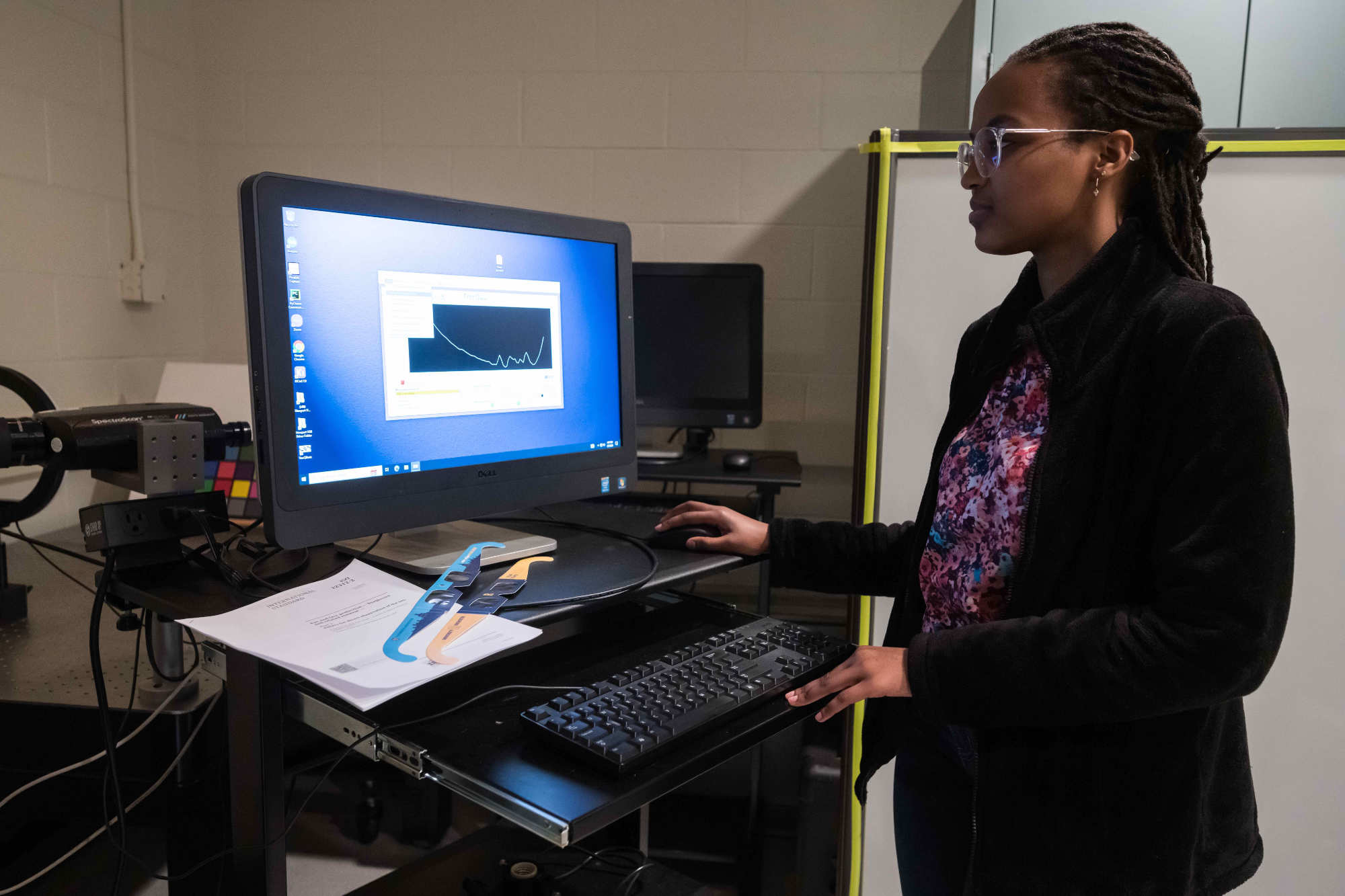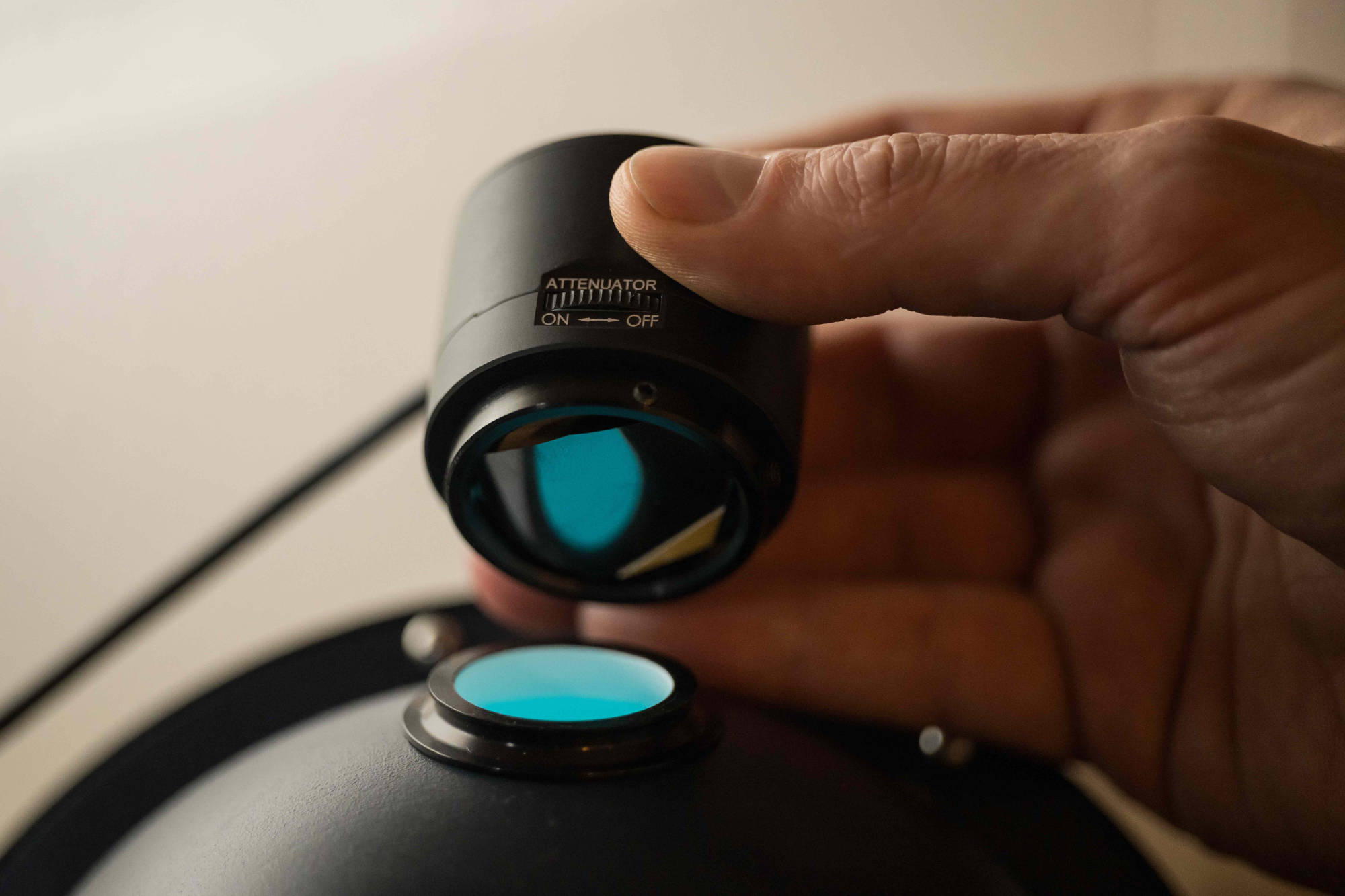An optics professor explains how eclipse glasses protect your eyes from the sun's light during an eclipse.
Properly protecting your eyes during a solar eclipse is crucial for avoiding long-term damage to your vision. In anticipation of the total solar eclipse happening in Rochester, New York, on April 8, 2024, James Zavislan, a professor of optics and of biomedical engineering and an associate professor of ophthalmology at the University of Rochester, wants everyone to understand the risks involved and how to have a safe, enjoyable eclipse experience.
Zavislan, who studied and currently teaches at the Institute of Optics, has devoted his career to studying light, and is an expert in optical system analysis and optical engineering. He explains how the sun's light affects your eyes, how solar eclipse glasses prevent damage, and why you probably shouldn't dust off your old eclipse glasses to reuse this April. Along the way, he offers helpful tips to have a memorable viewing experience.
Q&A with James Zavislan
How do solar eclipse glasses work?
Zavislan: Eclipse glasses attenuate, or filter out, the portions of the solar spectrum that could injure the eye. Different spectra of light from the sun have different effects on the eye, and the three most important to block in this case are:
- Ultraviolet-wavelengths we normally can't see that get us sunburned if we spend too much time outside. This light puts our cornea at risk.
- Visible-in particular the wavelengths that are closer to the blue portion of the spectrum.
- Infrared-wavelengths that you don't see, but we normally associate with heat.
Eclipse glasses are made of mylar, a polyester film. Historically, that's what photographic film was made from at Eastman Kodak right here in Rochester, and it's picked because it is very inexpensive to make and very strong. The outside portion is a reflective metal film, usually aluminum, that's on a partially absorbing substrate that provides a little bit of additional attenuation as well in case the metallic film gets slightly scratched.

Can you look at a solar eclipse? And what happens if you look at a solar eclipse for too long?
Zavislan: In general, when we look up at the sun, it's uncomfortably bright, so our pupils constrict, and at some point, we just look away. During an eclipse, less and less of the sun is exposed, so our instinct to look away is diminished; however, the portions that are still visible have the same brightness as if the moon was not blocking it.
There are two things you worry about from looking at the sun long-term: photochemical changes and heat.
As you stare at the sun, you'll be putting the most acute part of your vision, called the macula, at risk. While looking at things of interest, you'll get a cumulative dose of blue light, which causes a photochemical injury, putting chemicals in your eye that can essentially be toxic, and then you're adding to it a thermal background. Those two together, especially the photochemical effect, can lead to a degradation of your retina.
How do I know if my solar eclipse glasses are good enough?
Zavislan: You want to make sure it meets the standards set by the International Organization for Standardization, or ISO. If you look on the inside of the glasses, you should see an ISO number 12312-2 stamped there.
The final thing that I encourage everybody to do prior to using the glasses is to hold them up to a very bright light and make sure there are not any pinhole defects. These glasses can get damaged. It's really not a good idea to pull those glasses from 2017 out of the drawer and use them again. They may have gotten scratched or damaged or otherwise have aged. Go with a fresh pair of solar eclipse glasses from reputable source.

Can I take off my glasses during the eclipse?
Zavislan: You should only take them off during totality, when no white portion of the sun is visible. It may be tempting just before or after when there will be bright spots on the edge-they're sometimes called diamonds or Baily's beads-but keep your glasses on until you see no portion of the sun.
Can I use my ISO-certified sunglasses to view an eclipse?
Zavislan: Sunglasses are not intended to protect your eye from direct viewing. They could be ISO-certified under a different standard. You only want to look at the sun during an eclipse with glasses that have the ISO 12312-2 standard stamped on them.

Can I use my phone to take a photo of the eclipse?
Zavislan: You should not point your cellphone camera up to the sun. First, you're likely not going to get a good picture. Second, you're going to be likely in a situation where you're going to be encouraged to kind of look around your glasses as you're trying to see your cell phone picture. Not good. And then the third thing is that you're essentially baking your sensor.
The one time where I would encourage you to try and grab one cell phone picture is during totality. If you have a cell phone camera that can do some level of optical zoom-I wouldn't bother with digital zoom-you can just take a quick picture. But my strong advice is to not spend a lot of time trying to get a cell phone picture for what should be a wonderful visual memory during totality.
How did the University of Rochester ensure its eclipse glasses are safe?
Zavislan: We performed additional testing at the Institute of Optics. One of the things we do within our training program is to give the students an opportunity to test optics. This is a priceless chance with the eclipse coming up to show how one would certify these glasses and make sure we're meeting the standard. It's also a great chance to illustrate to our students what's possible using routine equipment that we have at the Institute of Optics.
Is there anything special about the April 8 eclipse that I should look for?
Zavislan: When the sun's main disk is blocked, there will be streamers of the sun's corona flowing outward. We're fortunate that we're entering what's called a solar maximum-the sun is nearing its absolute peak of activity-and because of that, there are energetic expulsions almost every week. If we're really fortunate, one of those coronal mass ejections would be happening right around the time of the eclipse.






